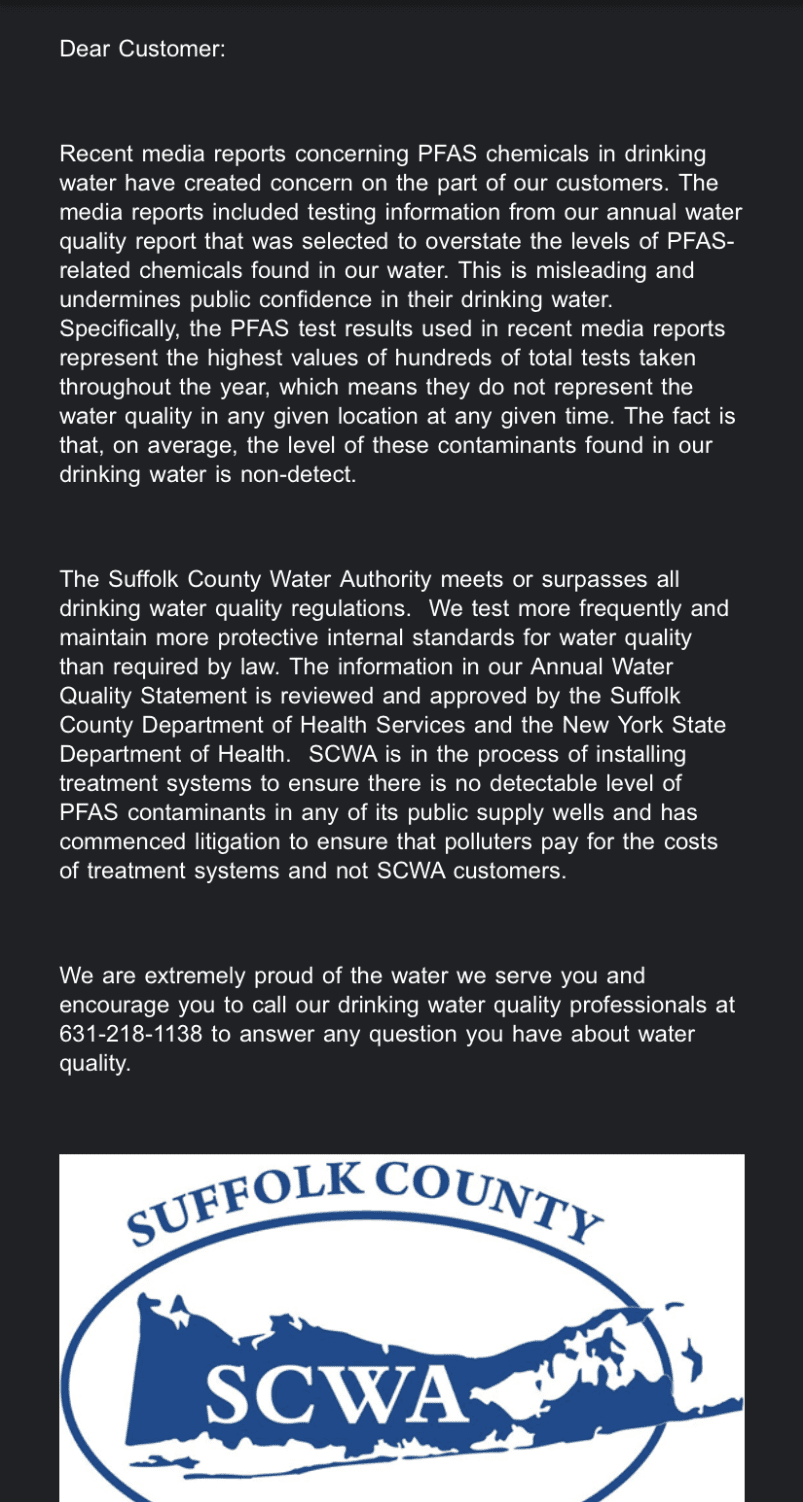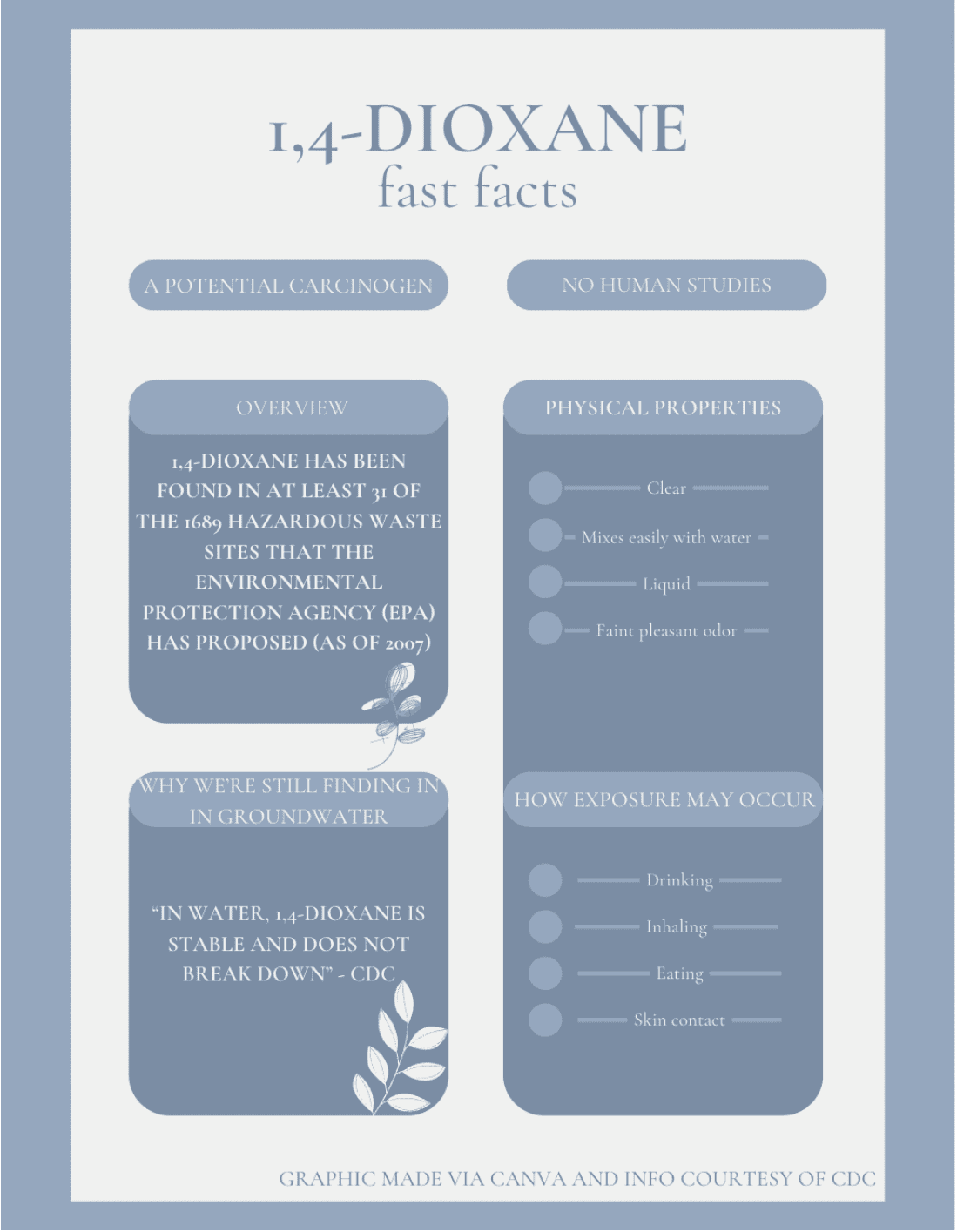By Simran Desai
Editor’s note: The following is part three of an investigative series examining the state of Long Island’s water supply.
Christina Gauffrie was conducting research for her Advanced Placement research class at Sayville High School in 2019 when she came across something she found concerning. The tap water she was drinking at home was potentially tainted with cancer-causing chemicals.
Gauffrie, now a junior nursing student at Stony Brook University and longtime resident of Suffolk County, where Sayville High School is located, said she immediately stopped drinking tap water. “I haven’t drank tap water since, at all. I don’t even cook with tap water,” she said.
Others in her family share her worry. “I know people in my family, they go out and buy jugs of Poland Spring because they’re not OK with [tap water]. So I think more people are concerned than there are those that are comfortable with it,” she said.
Suffolk has one water authority, the Suffolk County Water Authority (SCWA), which serves roughly 1.2 million people, according to its website. Four years after Gauffrie discovered the presence of chemicals in her water, the SCWA received $34 million in state funding to aid in cleaning them up.

In Nassau County, there are 46 public water systems. In the Town of Hempstead, $200 million was recently allocated for fiscal year 2024 to remove 1,4-dioxane, a possible carcinogen, from drinking water, as officials noted at a town budget meeting last October. The funds are to help six districts within the town clean up their water.
The SCWA is currently embroiled in litigation involving 1,4-dioxane, a chemical component of industrial solvents. According to July 2022 records, the water authority is suing the Procter & Gamble Company, Shell Oil Company, Dow Chemical Company, Ferro Corporation and Legacy Vulcan LLC.
“1,4-dioxane is a man-made chemical. It could be a byproduct of the manufacturing process. It also could be used as a stabilizer for many solvents,” said Thomas Schneider, director of water quality and laboratory services at the SCWA when explaining how 1,4-dioxane may have gotten into Long Island groundwater.
The National Institute of Environmental Health Sciences listed 1,4-dioxane in its 2021 Report on Carcinogens, stating, “1,4-dioxane is reasonably anticipated to be a human carcinogen based on sufficient evidence of carcinogenicity from studies in experimental animals.” Carcinogens are any substances that may cause cancer or are likely to cause cancer.

Robin Mackar, senior writer and media relations coordinator for the National Institutes of Health, wrote in an email to The Advocate, “A listing in the Report on Carcinogens means that the substance poses a potential hazard. However, it does not establish that a substance will cause cancer in an individual.”
There are currently no human studies examining the impact of 1,4-dioxane on human health.
In its toxicological profile for 1,4-dioxane, the Agency for Toxic Substances and Disease Registry, a part of the federal Department of Health and Human Services, notes that the chemical has been found in studies of rats to cause cancer.
According to the federal Centers for Disease Control and Prevention, there are many factors that can determine if exposure to 1,4-dioxane will cause harm. These include the dose, duration and how one came in contact with the chemical. As well, lifestyle and environmental factors play a part in cancer formation.
How precisely 1,4-dioxane got into Long Island water is not entirely certain. It may have accidentally been spilled into the ground, or as is the case with the infamous Bethpage chemical plume, it may have been dumped there.
Gary Ginsberg, director of the New York Department of Health’s Center for Environmental Health, said, “Where we tend to see it [1,4-dioxane] be a problem, above our maximum contaminant level, is in places where there were former industrial operations.”
According to Ginsberg, it is no longer common practice to release 1,4-dioxane anywhere. Ginsberg also said, “We don’t know how far back any of this contamination goes.”
For the water departments that are seeing elevated levels of 1,4-dioxane, Ginsberg said, they are still well below what would be needed to cause a health risk.
The CDC has also found that people may be exposed to 1,4-dioxane through contact with cosmetics, detergents, shampoos and pharmaceuticals, in addition to drinking water.







